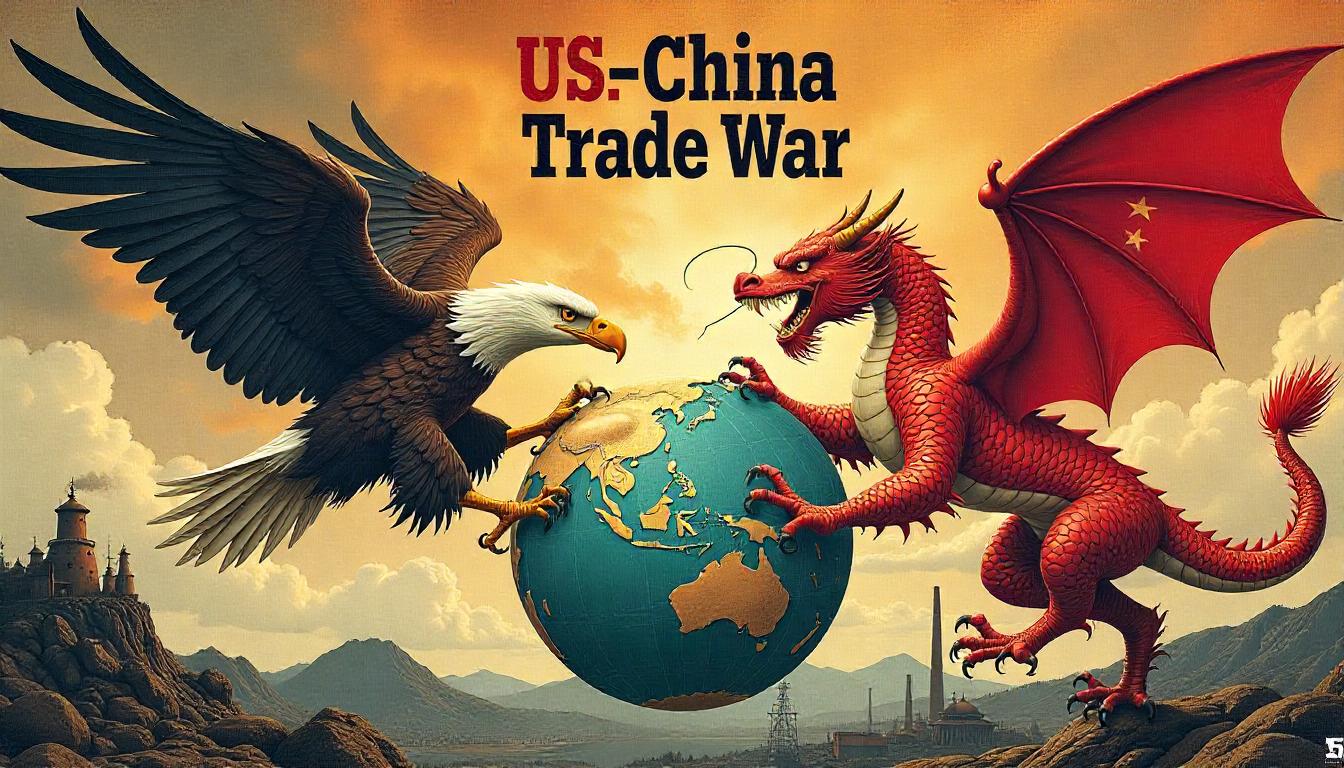If China & US Cut Trade Ties: What Each Side Loses
Over the last decade, U.S.-China trade has served as a pillar of global commerce. The economic relationship between these two giants influences everything from commodity prices to technological innovation and global supply chains. But what would happen if the U.S. and China completely severed their trade ties? The consequences would reverberate not only in Washington and Beijing but across the globe.
How the Korea-Japan-China Trade Deal Changes Everything
A Decade of Trade in Numbers
Between 2013 and 2023, bilateral trade between the U.S. and China consistently topped half a trillion dollars annually. In 2022, this figure peaked at a record $690.6 billion. China exported $536.6 billion in goods to the U.S., while the U.S. exported $154 billion to China. This trade relationship has been mutually beneficial, albeit imbalanced.
China’s global exports in 2022 totaled approximately $3.6 trillion. Of that, nearly 15% were directed to the U.S. market, making the U.S. China’s single largest export destination. For the U.S., China ranked as its third-largest export market, accounting for about 7.5% of all U.S. exports. These numbers underline the strategic economic interdependence that has developed between the two nations.
The Economic Fallout of a Trade Breakup
A complete halt in trade would inflict considerable damage on both sides. China would lose its largest consumer base, resulting in an immediate shock to its export-driven economy. With a significant portion of its GDP reliant on exports, such a break would jeopardize millions of manufacturing jobs and cause GDP contraction. Local industries—especially electronics, machinery, and consumer goods—would be severely impacted.
In the U.S., the consequences would be equally alarming, albeit different in nature. American consumers and businesses depend heavily on low-cost Chinese imports. A sudden trade halt would result in skyrocketing prices for electronics, clothing, furniture, and everyday goods. Inflation would spike, and companies would face pressure to find alternative suppliers, potentially passing costs to consumers and laying off workers.
The Tech Sector: A Symbiotic Dependency
Few industries reveal the depth of U.S.-China interdependence like the tech sector. American giants such as Apple, Google, Tesla, and Microsoft rely on Chinese factories to produce high-tech components and assemble products. Over 90% of Apple’s devices are manufactured in China, and Tesla’s Gigafactory in Shanghai has become central to its global operations.
If trade were to cease, these companies would be forced to relocate manufacturing to other nations like Vietnam, India, or Mexico. However, such transitions are costly, time-consuming, and logistically complex. Delays in production, reduced margins, and the loss of skilled labor would ripple across the global tech ecosystem, potentially stifling innovation and slowing product rollouts.
On the flip side, China would lose access to advanced American technologies, including semiconductors, software, and intellectual property. Despite efforts to develop its domestic tech sector, China remains reliant on U.S. firms for cutting-edge chips and software frameworks. Losing this access would hinder China’s AI, cloud computing, and 5G ambitions.
Manufacturing and Apparel: More Than Just Labor
In addition to tech, manufacturing and apparel form another vital link. American companies like Nike and Adidas have long depended on Chinese factories for efficient and cost-effective production. These goods are then exported worldwide, supporting the brands’ global market reach.
If these companies were forced to exit China, they would face rising costs, lower productivity, and difficulty replicating the vast, integrated manufacturing infrastructure China provides. China, in turn, would lose jobs, tax revenues, and its strategic leverage as the “factory of the world.”
Agriculture, Energy, and Raw Materials
Another often-overlooked aspect is agricultural trade. The U.S. exports billions in soybeans, corn, and meat to China annually. Severing this flow would devastate American farmers and agribusinesses, many of whom depend on the Chinese market for survival. In retaliation, China could seek agricultural alternatives in Brazil, Argentina, or Russia, but not without initial supply challenges.
The energy sector would also feel the shock. The U.S. exports liquefied natural gas (LNG) and oil to China. A trade cut would compel China to rely more heavily on Middle Eastern and Russian energy suppliers, potentially destabilizing existing geopolitical energy alliances.
Global Supply Chain Disruptions
The ripple effects of a U.S.-China trade breakup would not be confined to their borders. Global supply chains, many of which run through China and end in the U.S., would be shattered. Countries like Germany, Japan, South Korea, and Mexico—whose industries depend on these integrated supply networks—would face economic tremors.
Companies in third-party countries would be forced to choose sides, potentially leading to a bifurcated global economy split between U.S.-led and China-led blocs. This would mark a fundamental shift in globalization, reversing decades of economic integration.
Political and Strategic Implications
Economics aside, the strategic dimension of a trade split is profound. Trade has long served as a stabilizing force in U.S.-China relations. Cutting that cord could escalate tensions, increase military posturing in the South China Sea and Taiwan Strait, and spark a new Cold War-like rivalry with less economic interdependence as a buffer.

The lineup of the Apple iPhone 13 is displayed on their first day of sale in New York in September 2021. Modern U.S.-China trade is dominated by tech products and electronics, including iPhones. (Richard Drew/The Associated Press)
Possible Offsets: Can the Gap Be Bridged?
Both countries would scramble to offset the losses. The U.S. would likely ramp up partnerships with India, Southeast Asia, and Latin America to find new suppliers and markets. However, matching China’s efficiency, scale, and cost advantages would be difficult.
China might accelerate its Belt and Road Initiative, deepen ties with Russia, Africa, and ASEAN, and push harder for technological self-reliance. Yet, these alternatives are unlikely to replace U.S. demand and innovation in the short term.
Who Loses More?
While both sides would experience significant disruption, China arguably stands to lose more in the long term. Its economy remains heavily dependent on exports, particularly to the U.S. A trade breakdown would undercut growth, destabilize its labor market, and hinder its technological progress.
The U.S., despite its reliance on Chinese imports, maintains a more diversified economy and stronger innovation ecosystem. It has greater capacity to absorb shocks and rebuild trade relations with alternative partners.
Conclusion
In the event of a complete trade severance between the U.S. and China, there are no winners—only degrees of loss. Both countries would face economic, political, and strategic setbacks. However, China, with its deeper reliance on the U.S. market and technology, would bear the brunt of the fallout.
Such a scenario serves as a cautionary tale: despite rising geopolitical tensions, economic cooperation remains one of the most powerful tools for peace and prosperity. The global economy, already fragile from pandemics and wars, may not survive another shock on this scale without long-lasting damage.





